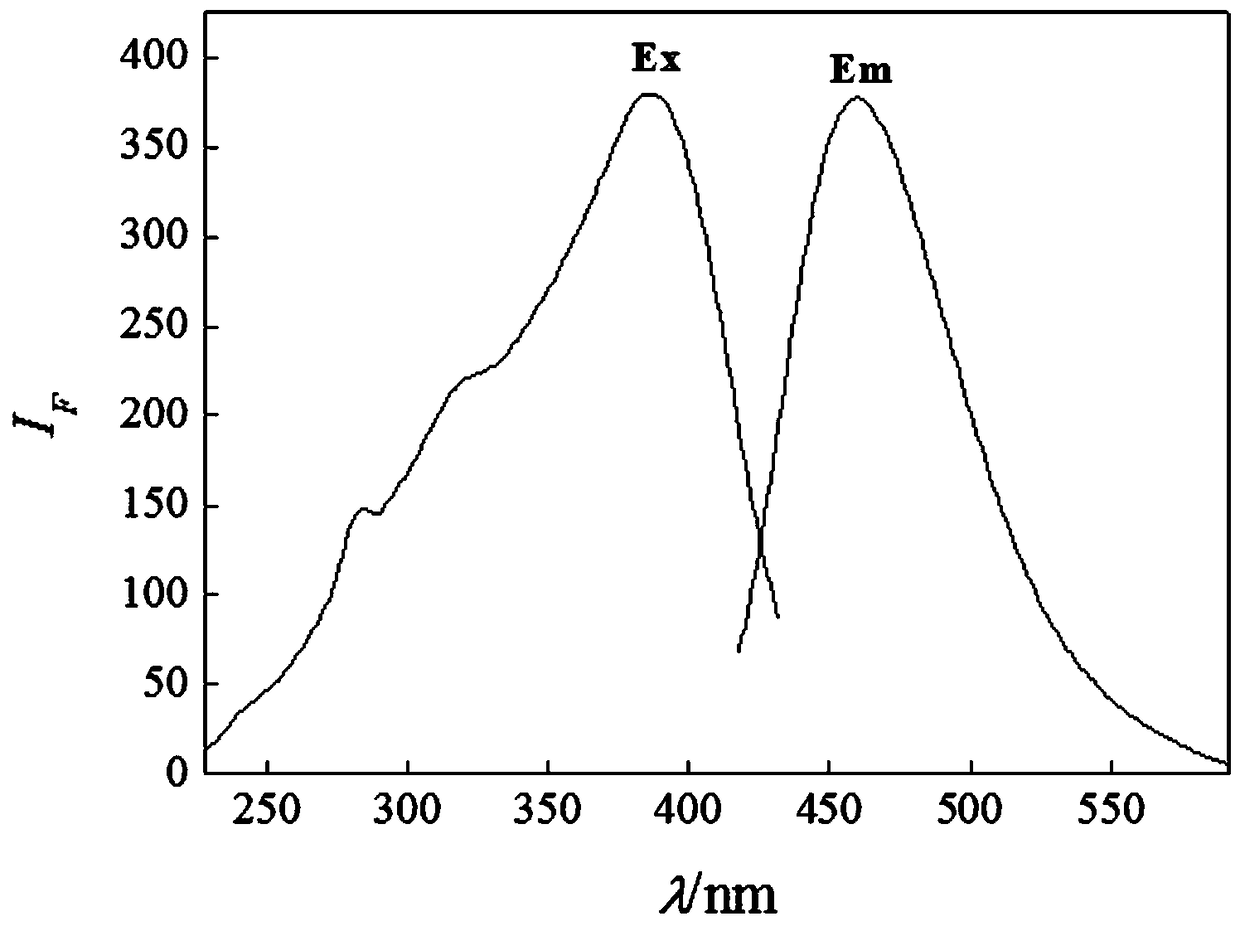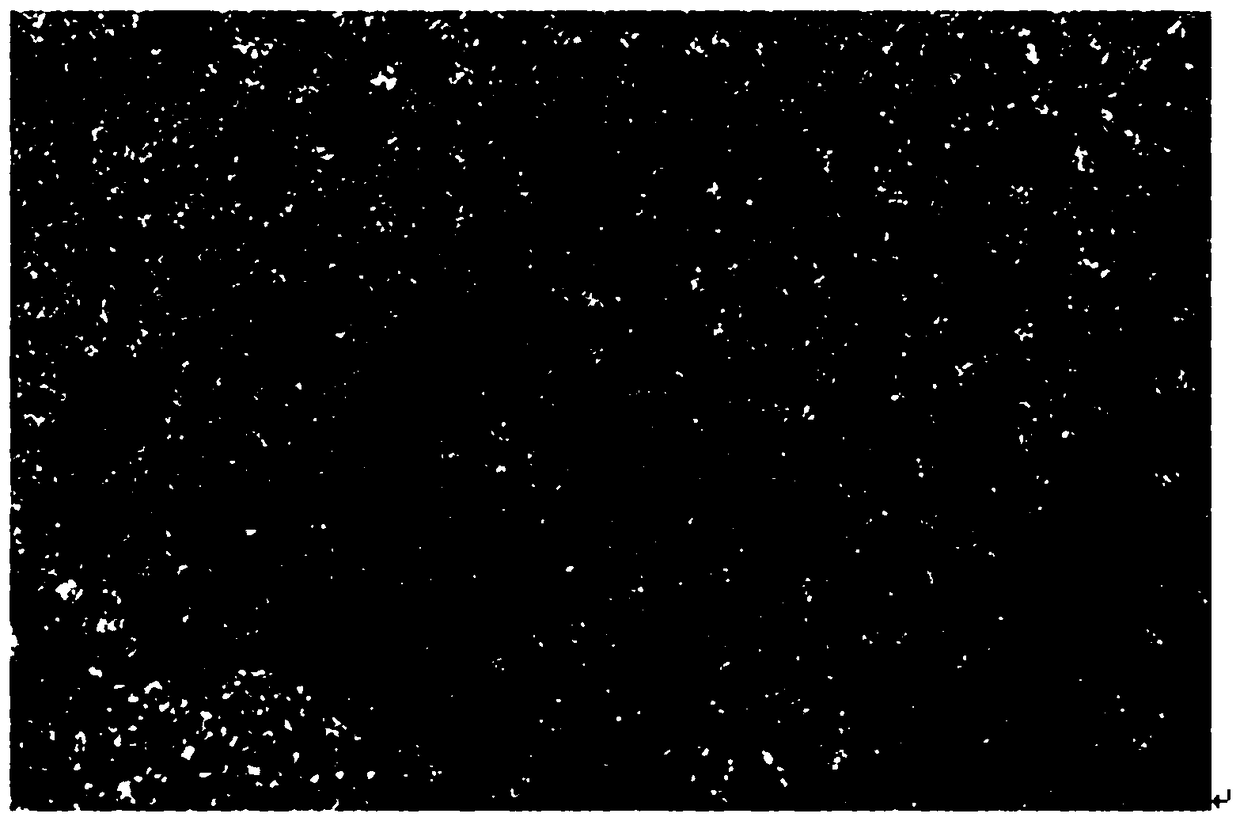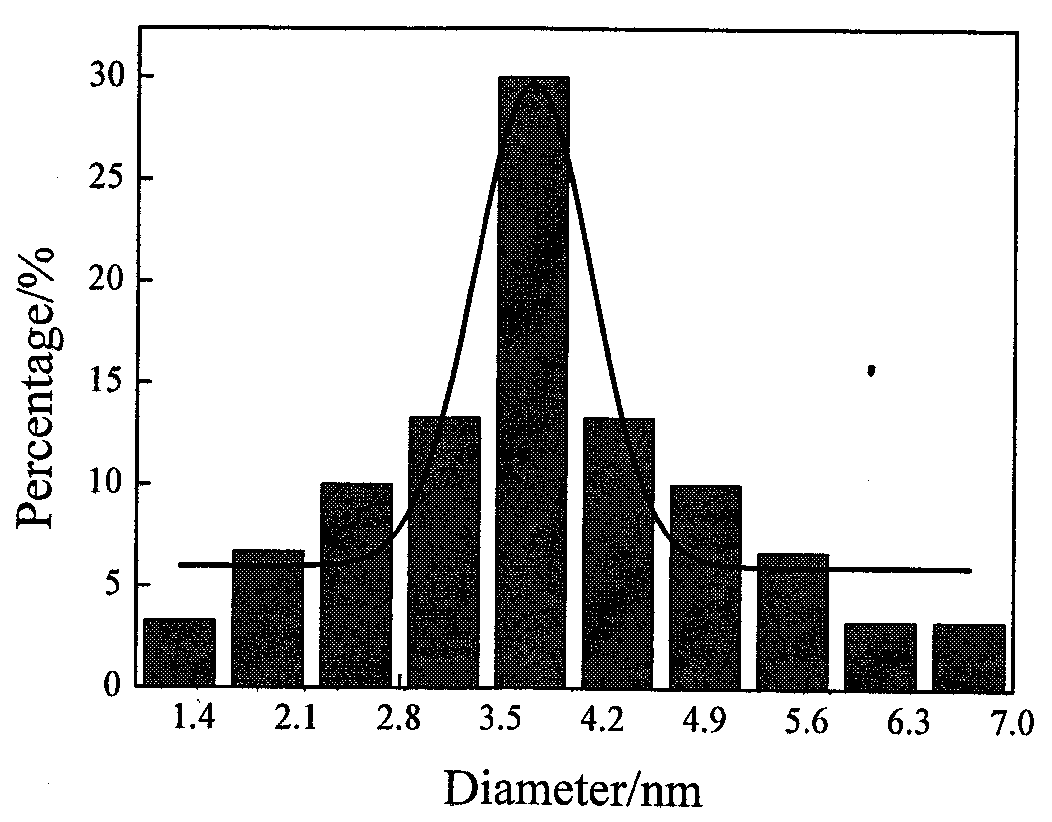A method for rapidly synthesizing carbon dots using yeast bacteria as the main carbon source by microwave and using them for the detection of solution pH
A technology for synthesizing carbon and mixed solutions, which is applied in the field of chemical applications and can solve problems such as unsuitable for fluorine-containing solutions, easy damage, and high impedance of glass electrodes
- Summary
- Abstract
- Description
- Claims
- Application Information
AI Technical Summary
Problems solved by technology
Method used
Image
Examples
Embodiment Construction
[0023] The following examples are intended to further illustrate the present invention, but not to further limit the present invention.
[0024] (1) Cultivation and extraction of yeast bacteria
[0025] The composition of the medium: glucose 20.0 g, distilled water 1000 mL.
[0026] Accurately weigh 20.0 g of glucose, add it to a beaker containing 900 mL of distilled water, stir with a glass rod to fully dissolve it, and dilute to 1000 mL. Measure 20 mL of glucose solution into a triangular flask, add a cotton stopper, and wrap it with kraft paper. Put the glucose solution to be sterilized into the sterilization pot and sterilize at 121°C for 20 min. Place the sterilized glucose solution in a sterile workbench and turn on the UV lamp to sterilize for 2 hours. Strictly follow the sterility requirements, inoculate 0.020 g of Angel high-active dry yeast (Angel Yeast Co., Ltd.) into the glucose solution, and finally incubate at 37 °C for 24 h.
[0027] Take a bottle of the above cultur...
PUM
| Property | Measurement | Unit |
|---|---|---|
| particle size | aaaaa | aaaaa |
Abstract
Description
Claims
Application Information
 Login to View More
Login to View More - R&D
- Intellectual Property
- Life Sciences
- Materials
- Tech Scout
- Unparalleled Data Quality
- Higher Quality Content
- 60% Fewer Hallucinations
Browse by: Latest US Patents, China's latest patents, Technical Efficacy Thesaurus, Application Domain, Technology Topic, Popular Technical Reports.
© 2025 PatSnap. All rights reserved.Legal|Privacy policy|Modern Slavery Act Transparency Statement|Sitemap|About US| Contact US: help@patsnap.com



